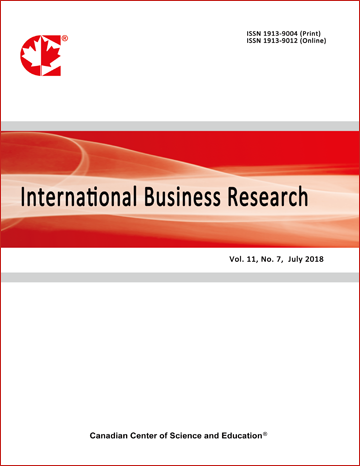Exchange Rates and Export Competitiveness in Selected ASEAN Economies
- Saadiah Mohamad
- Mahendhiran Nair
- Kamaruzaman, Jusoff
Abstract
This paper discusses the impact of exchange rates on the export performance of selected ASEAN (Association of South East Asian Nations) economies, namely, Indonesia, Malaysia, Singapore and Thailand. We construct an empirical model to account for the role of the real exchange rate and other economic fundamentals such as macroeconomic stability, terms of trade, capital goods investment, external demand and human capital. This work also attempts to see if the higher import content industries (such as electronics and textile) are more affected by exchange rate changes than the more resource-based industries (such as wood and rubber). The study makes use of a panel data and estimates export equations using a fixed effect model both at the aggregate and sectoral levels. The findings in this study strongly corroborate results from the theoretical framework that the exchange rate misalignment and variability have significant impact on export performance, both at the aggregate and industry level. This work also gives evidence for the importance of capital goods machinery imports (technology) and the role of human capital. The study also finds that the export growth path for the selected ASEAN economies is dependent on global demand conditions, especially demand from OECD countries. However, there is no evidence to indicate that the exports from high-import content industries are more affected by exchange rate changes than the resource based industries.
- Full Text:
 PDF
PDF
- DOI:10.5539/ibr.v2n2p156
Journal Metrics
h-index (January 2024): 102
i10-index (January 2024): 947
h5-index (January 2024): N/A
h5-median(January 2024): N/A
( The data was calculated based on Google Scholar Citations. Click Here to Learn More. )
Index
- Academic Journals Database
- ACNP
- ANVUR (Italian National Agency for the Evaluation of Universities and Research Institutes)
- CNKI Scholar
- COPAC
- CrossRef
- EBSCOhost
- EconBiz
- ECONIS
- EconPapers
- Elektronische Zeitschriftenbibliothek (EZB)
- EuroPub Database
- Excellence in Research for Australia (ERA)
- Genamics JournalSeek
- Google Scholar
- Harvard Library
- IBZ Online
- IDEAS
- Infotrieve
- Kobson
- LOCKSS
- Mendeley
- MIAR
- Norwegian Centre for Research Data (NSD)
- PKP Open Archives Harvester
- Publons
- Qualis/CAPES
- RePEc
- ResearchGate
- ROAD
- Scilit
- SHERPA/RoMEO
- SocioRePEc
- Technische Informationsbibliothek (TIB)
- The Keepers Registry
- UCR Library
- Universe Digital Library
- ZBW-German National Library of Economics
- Zeitschriften Daten Bank (ZDB)
Contact
- Kevin DuranEditorial Assistant
- ibr@ccsenet.org
